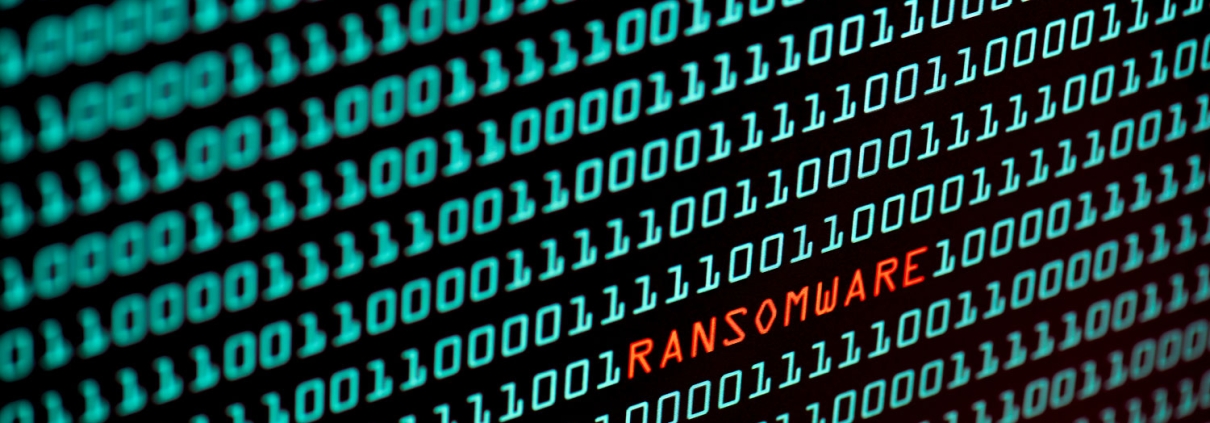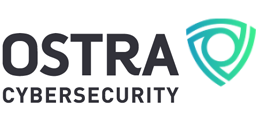23 Ways to Avoid Becoming a Victim of Ransomware
The threat of ransomware is a growing concern for businesses of all sizes. Large corporations invest heavily in cybersecurity, but it isn’t just the big companies that must be prepared to protect their sensitive data.
This Is Not a Drill
Despite significant advances in cybersecurity, a recent press release by Thales, a global leader in advanced technologies, states that:
- 48% of IT professionals reported an increase in ransomware attacks, with 22% of organizations polled experiencing a ransomware attack in the past 12 months
- 51% of enterprises do not have a formal ransomware plan
Small and medium-sized businesses, along with their employees, must also take steps to protect themselves from ransomware attacks or risk losing valuable data and revenue. Cybercriminals are constantly evolving their techniques to exploit vulnerabilities and hold data hostage, demanding hefty ransoms for its release.
What is Ransomware?
Ransomware is malicious software designed to encrypt files on a victim’s computer or network, rendering them inaccessible until a ransom is paid.
Cybercriminals employ various tactics to infect systems, such as phishing emails or exploiting compromised websites or software vulnerabilities. Understanding the gravity of this threat is essential to better protect yourself and your digital assets.
The Cost of Inaction
A recent article in Forbes Magazine titled “The Sobering Truth About Ransomware for the 80 Percent Who Paid Up” provides insights into the alarming reality faced by those who have fallen victim to ransomware attacks. The article delves deep into the experiences of the 80 percent who have made the difficult decision to pay the ransom, shedding light on the harsh consequences and long-lasting effects of such actions.
The Forbes article highlights the difficult choices organizations and individuals face when confronted with a ransomware attack. It reveals that many victims still suffer significant setbacks despite paying the demanded ransom. The payment, often made as a last resort to regain access to crucial data or systems, does not guarantee a seamless restoration process. In many cases, the restored data may still be compromised or contain lingering vulnerabilities that can be exploited again in the future.
An Ounce of Prevention . . .
In light of the sobering truths presented in the Forbes article, it becomes evident that prevention and proactive measures are paramount in the fight against ransomware. Your organization can significantly reduce its susceptibility to such attacks by implementing the safeguards below. Investing in robust cybersecurity practices, staying informed about the latest threats, and establishing comprehensive incident response plans to mitigate the devastating impact of ransomware attacks are crucial.
To safeguard your business and avoid falling victim to ransomware attacks, it is necessary to adopt proactive measures and stay well-informed. Below, we list 23 effective ways to protect yourself from ransomware and preserve the security of your valuable data:
1. Install and Update Reliable Antivirus Software
One of the best defenses against ransomware is robust antivirus software. Choose a reputable antivirus program that provides real-time protection against malware, including ransomware. And make sure you or your security team regularly updates the software to ensure it can detect and neutralize the latest threats effectively.
2. Keep Your Operating System(s) Up to Date
Operating system updates often include crucial security patches that address vulnerabilities cybercriminals exploit. Set your system to automatically install updates or regularly check for updates manually. By keeping your operating system up to date, you fortify its defenses against ransomware attacks.
3. Enable Automatic Software Updates
In addition to your operating system(s), enabling automatic updates for all your software applications is equally vital. Popular software, such as web browsers, office suites, and media players, frequently release updates to enhance functionality and security. Enable automatic updates to ensure you have the latest versions installed, equipped with robust defenses against ransomware.
4. Exercise Caution When Opening Email Attachments
Phishing emails are a common delivery method for ransomware. Exercise caution when opening email attachments, especially those from unknown or suspicious senders. Verify the sender’s authenticity before opening any attachments, and if in doubt, refrain from opening suspicious emails altogether.
5. Beware of Suspicious Links
Similar to email attachments, ransomware can also be delivered through malicious links. Be cautious when clicking on links, especially those received via email, social media messages, or unknown websites. Hover your cursor over the link to preview the URL before clicking. If it seems suspicious, avoid clicking to mitigate the risk of a ransomware infection.
6. Implement a Robust Firewall
A firewall acts as a barrier between your computer or network and the internet, monitoring and filtering incoming and outgoing network traffic. Configure a robust firewall on your system to establish an additional layer of protection against ransomware and other cyber threats.
7. Secure Your Wi-Fi Network
Securing your Wi-Fi network is crucial to prevent unauthorized access and potential ransomware attacks. Change the default administrator credentials of your router, use strong WPA2 encryption, and regularly update the firmware to ensure the network remains secure.
8. Create Strong, Unique Passwords
Using strong, unique passwords is fundamental to protecting your digital assets. Avoid using easily guessable passwords, and consider using a password manager to generate and store complex passwords securely.
9. Implement Two-Factor Authentication (2FA)
Two-factor authentication adds an extra layer of security by requiring users to provide additional verification, such as a temporary code sent to their mobile device, in addition to their password. Enable 2FA whenever possible to enhance your defenses against ransomware attacks.
10. Regularly Backup Your Data
Regularly backing up your data is crucial in mitigating the impact of a ransomware attack. In the event of an infection, having up-to-date backups allows you to restore your files without paying the ransom. Automate the backup process and ensure backups are stored securely and frequently.
11. Store Backups Offline or in the Cloud
It is essential to keep backups separate from your primary system to prevent ransomware from encrypting them. Consider offline storage options like external hard drives or cloud-based backup services that offer robust security measures.
12. Use Encryption to Protect Sensitive Data
Implementing encryption for sensitive data adds an extra layer of protection, even if it falls into the wrong hands. Utilize encryption tools or software to encrypt files and folders containing valuable or confidential information.
13. Educate Yourself and Your Team
Education is key in the fight against ransomware. Stay informed about the latest threats, attack techniques, and preventive measures. Implement a security awareness training program to consistently educate yourself and your team about the best practices to identify and avoid potential risks.
14. Stay Informed About the Latest Threats
The landscape of ransomware threats is continually evolving. Stay informed by regularly visiting reputable cybersecurity websites like CISA and subscribing to their newsletters. You can adapt your security practices accordingly by staying up to date with the latest threats.
15. Limit User Privileges
Granting administrative privileges to all users increases the risk of ransomware spreading throughout your network. Limit user privileges to ensure only authorized personnel can access critical system functions and sensitive data.
16. Disable Macros in Office Documents
Ransomware can exploit macros in office documents to infect your system. Disable macros by default in programs like Microsoft Word and Excel, and only enable them when necessary and from trusted sources.
17. Use a Virtual Private Network (VPN)
When accessing the internet, especially on public Wi-Fi networks, use a VPN to encrypt your internet traffic and protect your data from potential eavesdroppers. A VPN adds an extra layer of security and anonymity, reducing the risk of ransomware attacks.
18. Implement Intrusion Detection and Prevention Systems (IDPS)
Intrusion Detection and Prevention Systems monitor network traffic, looking for suspicious activity and potential ransomware threats. Implement an IDPS to proactively identify and neutralize threats before they can compromise your systems.
19. Monitor Network Traffic
Regularly monitor your network traffic to identify any anomalies or suspicious activities. Unusual patterns or unexpected connections may indicate a ransomware attack in progress. Implement network monitoring tools to detect and respond promptly to potential threats.
20. Perform Regular Vulnerability Assessments
Regular vulnerability assessments help identify weaknesses in your systems and infrastructure that ransomware attacks could exploit. Engage the services of a reputable cybersecurity firm to conduct comprehensive vulnerability assessments and remediate any identified vulnerabilities promptly.
21. Employ Data Loss Prevention (DLP) Solutions
Data Loss Prevention solutions help detect and prevent the unauthorized transmission of sensitive data, providing additional protection against ransomware attacks. Implement DLP solutions tailored to your organization’s specific needs and industry regulations.
22. Develop an Incident Response Plan
Preparing an incident response plan is essential for effectively responding to a ransomware attack. Define roles, responsibilities, and procedures to follow in the event of an incident. Regularly review and update the plan to account for changes in the threat landscape.
23. Engage Managed Cybersecurity Services
We get it. This list looks overwhelming. While many of these measures can be implemented with minimal technical skill, there is a steep learning curve to proficiency in protecting against the threat of ransomware. As new threats and vectors emerge, the need for skillful cybersecurity professionals increases.
Most SMBs lack the technical resources to implement these measures in-house. To ensure your systems and data are secure, consider engaging the services of a managed cybersecurity service provider (also referred to as “Security as a Service” or “SECaaS.” They employ trained experts with the experience and resources to provide comprehensive protection against ransomware attacks.
Investing in managed cybersecurity services will help ensure your data stays safe and secure. A managed cybersecurity solution can provide advanced monitoring, detection, and response capabilities to strengthen your defenses against ransomware attacks and ensures that new threats are identified quickly and addressed–even as they evolve.
Take Action Now to Protect Your Business!
Don’t wait until it’s too late to safeguard your valuable data from the growing threat of ransomware. Implement the 23 effective ways listed in this article to fortify your defenses and avoid becoming a victim.
Ostra Cybersecurity is here to help. Our managed cybersecurity services provide comprehensive protection against ransomware attacks. Our expert team will monitor, detect, and respond to threats, ensuring your data stays safe and secure.
Take the proactive step towards a secure future. Contact us today to learn more about how Ostra Cybersecurity can empower your business and keep you protected from ransomware. Don’t let cybercriminals hold your data hostage – act now!
FAQs (Frequently Asked Questions)
Q: What is ransomware?
A: Ransomware is a form of malicious software that encrypts files on a victim’s computer or network, demanding a ransom for their release.
Q: How can I protect myself from ransomware?
A: You can protect yourself from ransomware by installing reliable antivirus software, keeping your operating system and software up to date, exercising caution with email attachments and suspicious links, implementing a robust firewall, securing your Wi-Fi network, creating strong passwords, and regularly backing up your data.
Q: Are automatic software updates important?
A: Yes, automatic software updates are crucial as they often include security patches that address vulnerabilities exploited by ransomware and other malware.
Q: What is two-factor authentication (2FA)?
A: Two-factor authentication is a security measure that requires users to provide two verification forms, such as a password and a temporary code sent to their mobile device, to access an account or system.
Q: Should I pay the ransom if I get infected by ransomware?
A: Paying the ransom is not recommended, as it encourages and funds cybercriminal activities. Instead, focus on restoring your files from backups and implementing preventive measures to avoid future attacks.
Q: Can professional cybersecurity services help prevent ransomware attacks?
A: Professional cybersecurity services offer expertise, advanced tools, and proactive monitoring to effectively detect and mitigate ransomware threats.
Conclusion
As ransomware attacks continue to pose a significant threat to individuals and organizations, taking proactive measures to protect your digital world is imperative. By implementing the 24 ways to avoid becoming a victim of ransomware discussed in this article, you can significantly enhance your security posture and minimize the risk of falling prey to these malicious attacks. Stay informed, stay vigilant, and safeguard your valuable data against the ever-evolving threat of ransomware.
Contact us to learn more about what it means to be powered by Ostra Cybersecurity.
As Your Trusted Cybersecurity Team, Ostra makes cybersecurity simple and accessible to businesses of all sizes. Ostra provides its partners and their clients with a multi-layered, comprehensive and fully managed Security as a Service.




